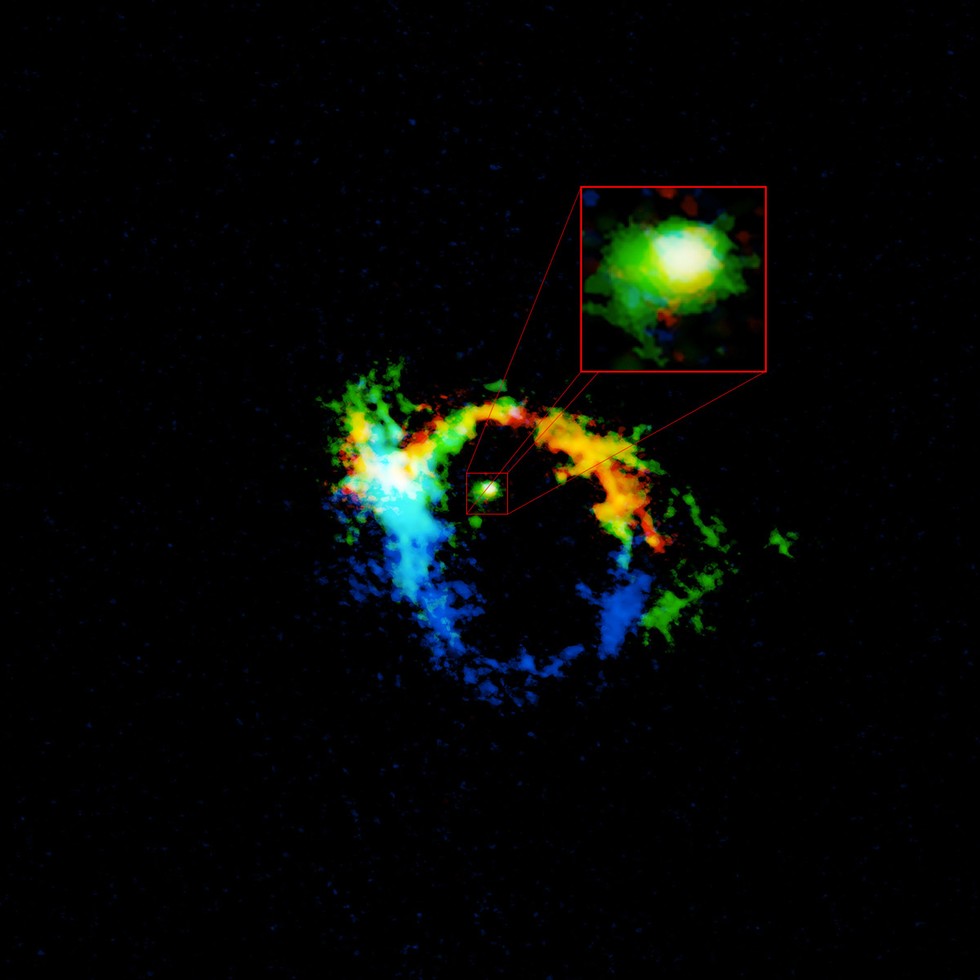A supermassive black hole in the core of a galaxy churns up hot gas from its own accretion disk to create a cloaking torus.
Many supermassive black holes in the centers of galaxies possess a thick ring of material known as a torus. Appearing like a supersized doughnut, astronomers have long thought that these features were created by churned-up material from the galactic core itself, falling into the black hole's gravitational well.
However, according to powerful new observations by the the Atacama Large Millimeter/submillimeter Array (ALMA) in Chile, this conventional model is, apparently, far too simple.
While studying the environment surrounding the supermassive black hole in the core of the barred spiral galaxy NGC 1068 47 million light-years away, ALMA was able to track clouds of material being flung outwards by the black hole, creating its own torus rather than material falling in.
"Think of a black hole as an engine," said astronomer Jack Gallimore, of Bucknell University in Lewisburg, Pennsylvania, in a statement. "It's fueled by material falling in on it from a flattened disk of dust and gas. But like any engine, a black hole can also emit exhaust."
Black holes consuming matter possess accretion disks, which are basically flat and hot features that swirl around the black hole's event horizon. The innermost section of the accretion disk is so hot that it generates X-ray and ultraviolet radiation, but further out, the disk is cooler and emits infrared and millimeter wavelength radiation. ALMA is very sensitive to the latter, allowing the observatory to track the motion of the gases in the outermost portion of NGC 1068's accretion disk.
"These clouds are traveling so fast that they reach 'escape velocity' and are jettisoned in a cone-like spray from both sides of the disk," said Gallimore. "With ALMA, we can for the first time see that it is the gas that is thrown out that hides the black hole, not the gas falling in."
Read more at Discovery News


No comments:
Post a Comment